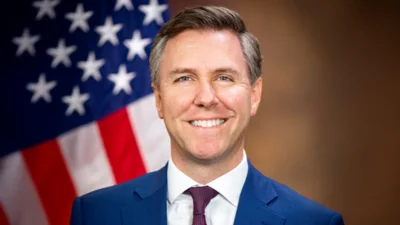WASHINGTON, DC - The Subcommittee on Digital Commerce and Consumer Protection, chaired by Rep. Bob Latta (R-OH), today held a hearing to continue exploring the potential of self-driving cars. Today’s hearing allowed for members to learn more about the safety benefits of self-driving cars, the testing of these automated technologies, and the projected timeframe for deployment. The take-away theme of today’s hearing centered around the safety benefits that self-driving technology provides to society.
At the start of the hearing, statistics reinforcing the promise of automated vehicle technology, including its ability to enhance safety, convenience, and mobility for consumers were provided by each witness. Gill Pratt, the CEO of Toyota Research Institute, specifically talked about how autonomous vehicle technology is already improving vehicle safety by reducing room for human error. He relayed, “In 2015 alone, approximately 1.25 million people died globally in automobile crashes, including 35,092 people in the U.S." Continuing, he added, “Because more than 90% of crashes are caused by human error, autonomous vehicle technology has the potential to dramatically reduce these numbers."
Witnesses listen to questions from committee members.
Adding to the previous points made on the safety potential of self-driving cars, was Anders Karrberg, Vice President of Government Affairs at Volvo Car Group. He stated, “VCC believes autonomous vehicles are an incredible opportunity to redesign the concept of personal mobility and to improve traffic safety. So it is critical that policymakers have a legislative framework ready, before the technology arrives on the market."
Given the inherent role of self-driving vehicles in reducing traffic fatalities, Chairman Latta discussed the testing measures in place for eventual deployment. “Today, conventional vehicles undergo a range of tests in laboratories, on proving grounds, and on public roads before they are sold to consumers. In each of these settings, vehicle engineers and professional test-drivers go through detailed assessments and inspections of vehicles to ensure compliance with crashworthiness and crash avoidance standards, and to verify a vehicle’s overall structural integrity."
Expanding on the process for deployment of self-driving vehicles, Michael F. Ableson, Vice President of Global Strategy for General Motors discussed why testing was so important and the processes in place “to prove safety and inform policy making." He continued, “We believe deploying in such a deliberate and controlled way will help to ensure that our self-driving vehicles meet the same strict standards for safety and quality that we’ve been building into our traditional vehicles for generations."
Witnesses also provided feedback on the challenges facing the auto industry as they strive to bring self-driving cars to the market. Joseph Okpaku, Vice President of Government Relations at Lyft, stated that, “the greatest potential obstacle [was] constrictive legislation and regulations." He goes on to say, “The worst possible scenario for the growth of autonomous vehicles is an inconsistent and conflicting patchwork of [s]tate, local, municipal, and county laws that will hamper efforts to bring AV technology to the market. This scenario is well on its way to becoming a reality."





